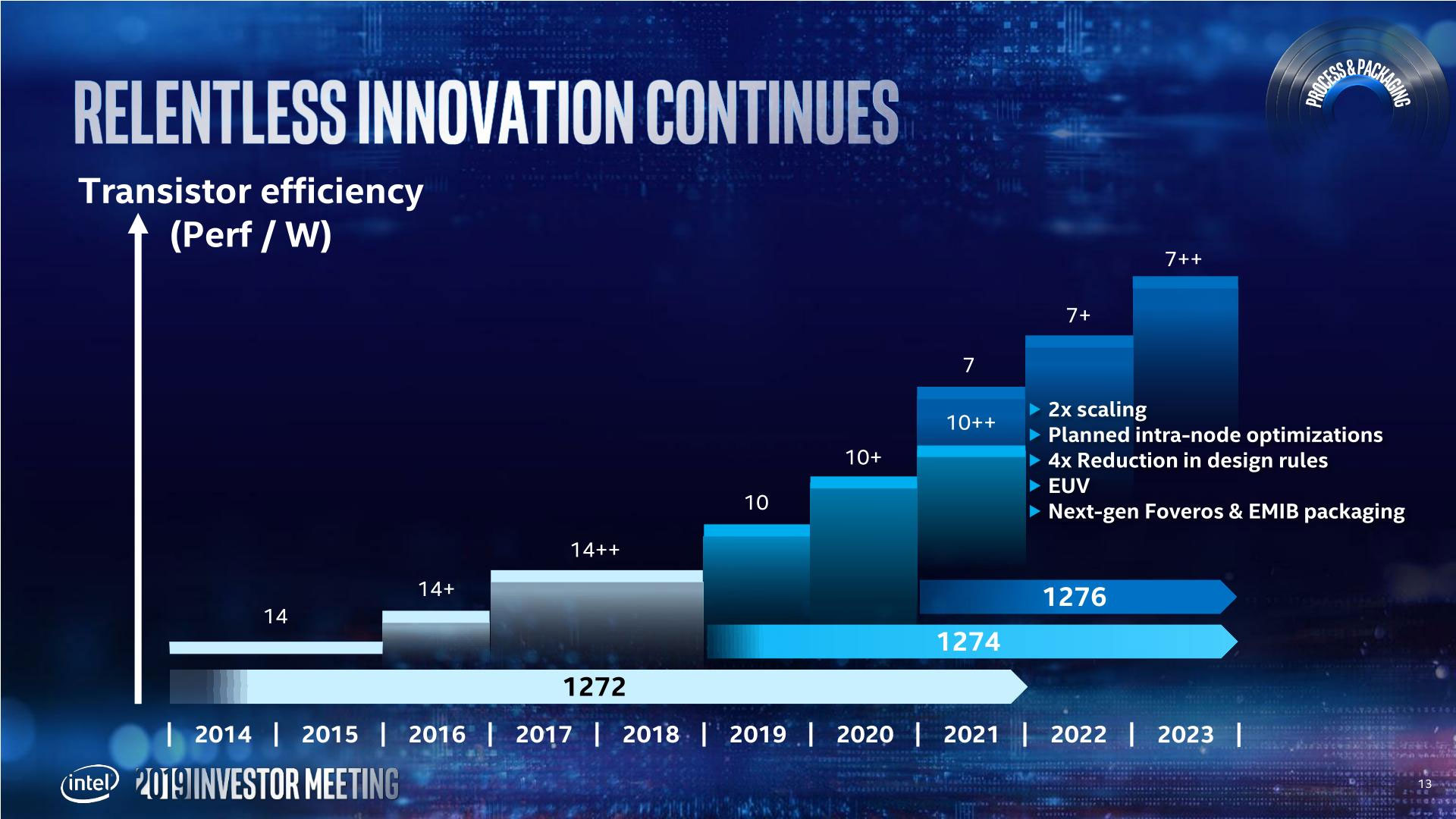Intel says it was too aggressive pursuing 10nm, will have 7nm chips in 2021
And a return to Moore's Law will come with them.

Intel has been late—very late—in getting its 10-nanometer processors out the door in mass quantities. Depending on the day, Intel is either shifty in its discussions regarding 10nm manufacturing and the struggles it's had, or candid. Recent comments by Intel CEO Bob Swan fall somewhere in between.
Swan made a public appearance at Fortune's Brainstorm Tech conference in Aspen, Colorado, on Tuesday and explained to the audience in attendance that Intel essentially set the bar too high for itself in pursuing 10nm. More specifically, he pointed to Intel's overly "aggressive goal" of going after a 2.7x transistor density improvement over 14nm.
"At a time when it gets harder and harder, we set a more aggressive goal. From that it just took us longer," Swan said.
This ties into Moore's Law, which has guided Intel's processor design goals for decades. Named after Intel co-founder and former CEO Gordon Moore, Moore's Law observes that transistor density in computer chips basically doubles every two years.
Needless to say, the 10nm delays have caused Intel to fall well behind that transistor density doubling. Many have proclaimed Moore's Law as dead, but as far as Swan is concerned, Moore's Law is not dead. It apparently just needed to undergo an unexpected surgery.
"The challenges of being late on this latest [10nm] node of Moore's Law was somewhat a function of what we've been able to do in the past, which in essence was define the odds on scaling the infrastructure," Swan explains.
Bumping up to a 2.7x scaling factor proved to be "very complicated," more so than Intel anticipated. He also says that Intel erred when it "prioritized performance at a time when predictability was really important."
Keep up to date with the most important stories and the best deals, as picked by the PC Gamer team.

"The short story is we learned from it, we'll get our 10nm node out this year. Our 7nm node will be out in two years and it will be a 2.0X scaling so back to the historical Moore's Law curve," Swan added.
Of course, AMD is already at 7nm (via TSMC), so it will have bragging rights for at least two years. That said, Intel has long maintained that its process node is more advanced than the competition. It's a way of saying that its 10nm node is roughly on par with AMD's 7nm node. That's impossible to judge at the moment (as it translates to performance), because we're still waiting on Intel's 10nm for the most part.
If you have a little over 23 minutes to spare, you can check out all of what Swan had to say here. As a prerequisite, you may also want to check out this breakdown of Intel's CPU roadmap covering 14nm to future 7nm processors.
Paul has been playing PC games and raking his knuckles on computer hardware since the Commodore 64. He does not have any tattoos, but thinks it would be cool to get one that reads LOAD"*",8,1. In his off time, he rides motorcycles and wrestles alligators (only one of those is true).


